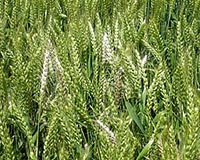 |
Washington DC (SPX) Apr 13, 2010 Lignin is the double-edged sword of biofuels: if you are making cellulosic ethanol, you want less lignin because it blocks the breakdown of cellulose. If you are using pyrolytic methods, you want more lignin because lignin contains more energy than cellulose. Whether you wish to maximize or minimize lignin content, an understanding of lignin synthesis is essential and has proved elusive. Lignin is a key adaptation to life on land, as it strengthens plant cell walls thereby helping land plants stand upright and reinforcing the cell walls of the specialized water-conducting tubes that are another key adaptation to growth in terrestrial environments. The lignin polymer is made up of a complex arrangement of subunits and its subunit composition differs among different species. For example, ferns and conifers have lignin composed mainly of p-hydroxyphenyl (H) and guaiacyl (G) lignin units. Flowering plants have H and G subunits, plus syringyl (S) subunits derived from sinapyl alcohol. Interestingly, S lignin is also found in some lycophytes, including the spikemoss Selaginella (photo). In research published this week in The Plant Cell, a team of researchers led by Clint Chapple of Purdue University showed that lignin synthesis proceeds along a different path in Selaginella. Their work centers on the characterization of the enzyme ferulate 5-hydroxylase (F5H); in flowering plants, this enzyme produces S lignin units from G lignin precursors. By comparing the Selaginella enzyme (Sm F5H) to the F5H from the model flowering plant Arabidopsis thaliana (At F5H), the authors found that Sm F5H could both catalyze the same reaction as At F5H and could also catalyze an additional reaction, acting on precursors of H lignin to form precursors to G and S lignin, and thereby bypassing four steps in angiosperm lignin synthesis. Indeed, transgenic expression of Sm F5H can restore normal lignin deposition to Arabidopsis plants with mutations in other enzymes of lignin biosynthesis. Interestingly, some combinations of transgenic Sm F5H and Arabidopsis lignin mutations produce lignin compositions likely not seen in nature, indicating that manipulation of this pathway can be used to engineer lignin composition. Moreover, since different lignin subunit compositions produce different lignin structural properties, this engineering may affect biomass characteristics such as digestibility. Author Clinton Chapple notes "It is exciting to realize that the study of plants so distantly related to crops can provide us with new tools to engineer plants that are of benefit to humans." This research also provides interesting insights on convergent evolution, the process whereby different evolutionary lineages arrive at similar adaptations, such as the independent evolution of wings for flight in bats and birds. Selaginella is part of one of the oldest divisions of vascular plants, resulting from an ancient split between the lycophytes and euphyllophytes (which include all modern seed plants). Similar to bat wings and bird wings, the synthesis of S lignin appears to have arisen independently in flowering plants and in lycophytes. Thus, this research provides both an interesting window on convergent evolution in plants and a potentially useful tool for engineering lignin synthesis.
Share This Article With Planet Earth
Related Links Research paper at Planet Cell Bio Fuel Technology and Application News
 Energy Crops Impact Environmental Quality
Energy Crops Impact Environmental QualityMadison WI (SPX) Apr 06, 2010 Crop residues, perennial warm season grasses, and short-rotation woody crops are potential biomass sources for cellulosic ethanol production. While most research is focused on the conversion of cellulosic feeedstocks into ethanol and increasing production of biomass, the impacts of growing energy crops and the removal of crop residue on soil and environmental quality have received less attention ... read more |
|
| The content herein, unless otherwise known to be public domain, are Copyright 1995-2010 - SpaceDaily. AFP and UPI Wire Stories are copyright Agence France-Presse and United Press International. ESA Portal Reports are copyright European Space Agency. All NASA sourced material is public domain. Additional copyrights may apply in whole or part to other bona fide parties. Advertising does not imply endorsement,agreement or approval of any opinions, statements or information provided by SpaceDaily on any Web page published or hosted by SpaceDaily. Privacy Statement |